Campbelltown Camden Train line
The Campbelltown to Camden train, or tram service as it was known, played an important role in transporting people from both towns to their required destination. Its stations between Campbelltown and Camden included: Maryfields, Kenny Hill, Curran's Hill, Graham's Hill, Narellan and Elderslie. The line closed down in December 1962, with a special journey held on January 1, 1963- the last journey 'Pansy' would make. This is the Maryfields Special on the Campbelltown Camden line.
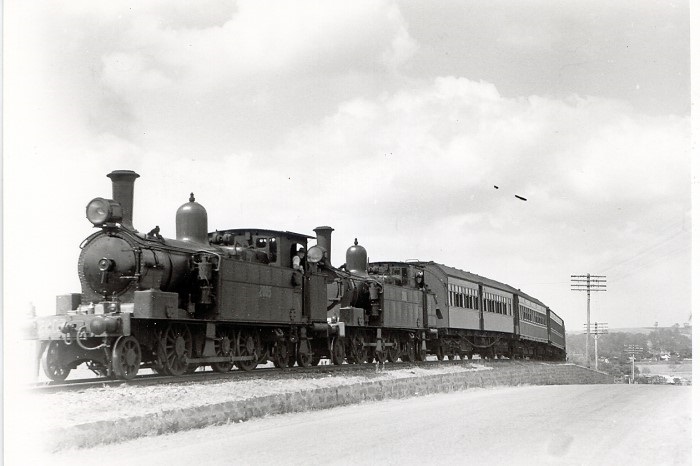
(Image sourced from Campbelltown and Airds Historical Society)
St Patricks Covent School for girls
1887 The Sisters of the Good Samaritan of the Order of St. Benedict arrive in Campbelltown to establish a convent/boarding school/high school for female students as well as to continue the provision of primary education at St. Patrick's Primary School (see Campbelltown 2020-1840's). St. Patrick's convent/boarding school/high school was established in St. John's Church(PDF, 233KB) (corner Broughton and George Streets) and opened and blessed by Cardinal Moran on April 28th, 1888. 1888 was a busy year for the Sisters of the Good Samaritan as they purchased the land and existing weatherboard cottages known as "Westview" (4 St John's Road) with the intent of establishing a boarding school for boys aged 5 -12 years. The first boarder intake at St. John's Preparatory College "Westview" took place in 1889."
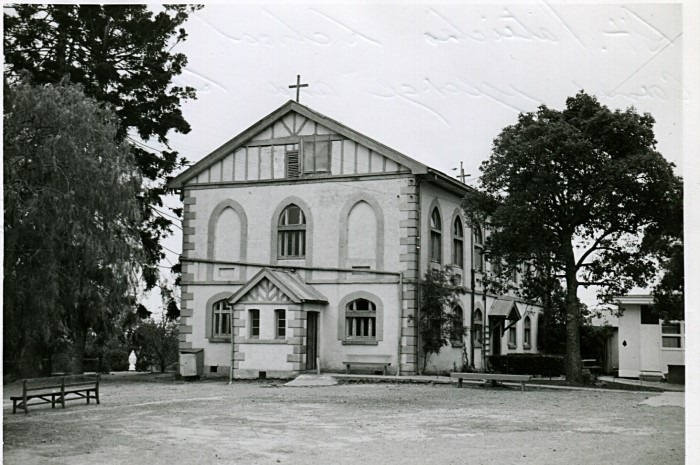
(Image sourced from Campbelltown and Airds Historical Society)
Below is a photograph of Westview - Purchased by Sisters of the Good Samaritan in 1888.
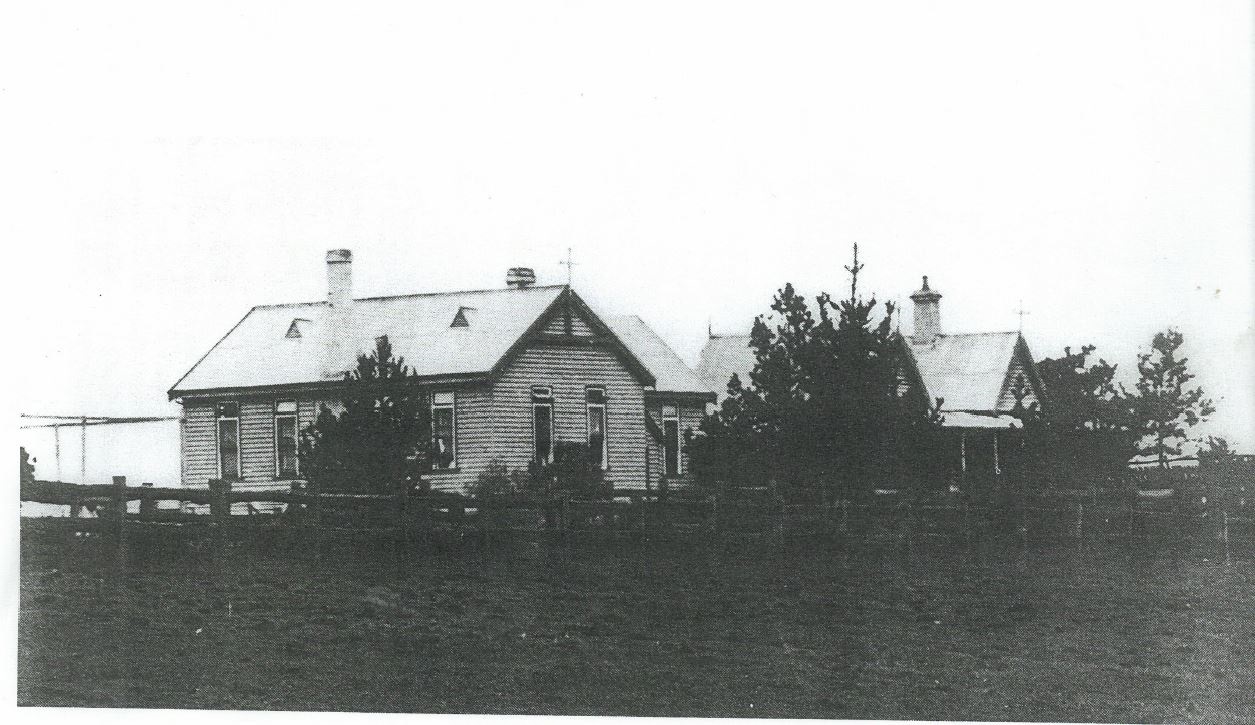
Below is a portrait of Mother Placid Caulfield sgs - The first religious principal of St. Patrick's College, Campbelltown.
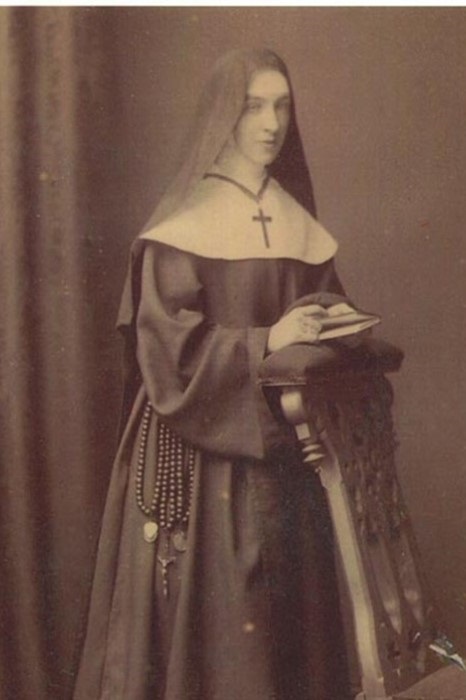
(Image sourced from Campbelltown Library and Sisters of the Good Samaritan Archive)
Below is a photo of the St. Patrick's College Students at Old St. John's Church site in the 1890s.
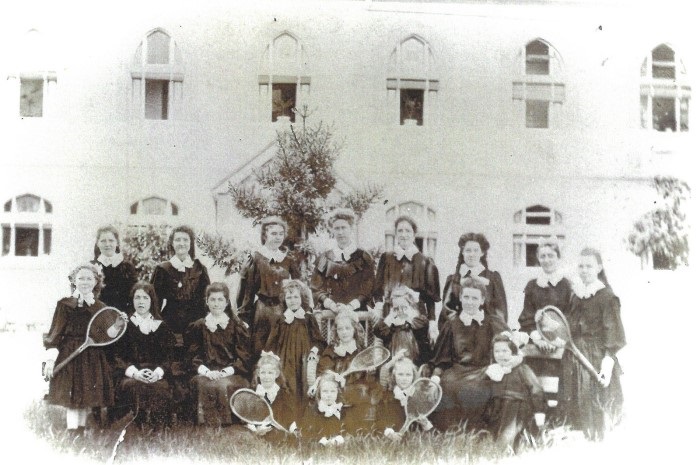
( Image sourced from St Patrick's College Archives)
CBC BANK relocates to a new magnificent building
The Commercial Banking Company (CBC) had been operating out of McGuanne's House but in 1881 relocated to this magnificent building(PDF, 204KB), an instant Campbelltown landmark. It remained a bank building until the 1980s when the CBC merged with the National Australia Bank. The building became a pancake restaurant, then in 1991 the home of the local newspaper, the Campbelltown-Macarthur Advertiser, until 2013. Standing outside are members of the Gore family, with future mayor Alex Munro in the doorway and Mrs Woodhouse on horseback.
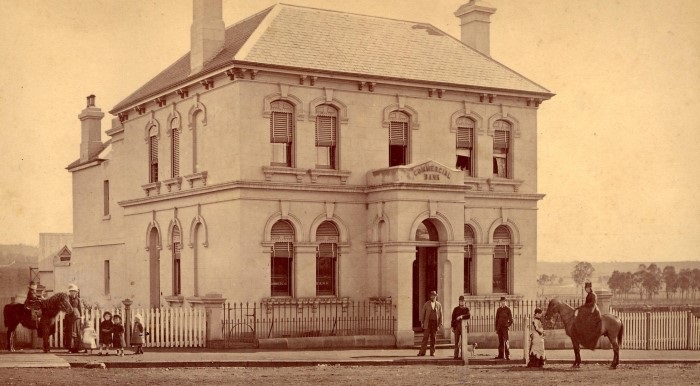
(Image sourced from Gore Family Collection)
A new Church - St John the Evangelist
In June 1886 a Gothic building(PDF, 193KB) more central to the township was commenced. A notable feature is a circular stained glass window above the entrance to the church.
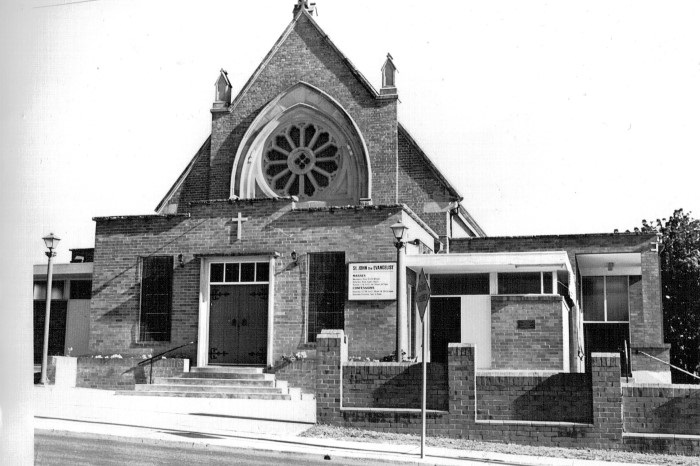
Glen Lorne
Glen Lorne stood off Appin Road, south of present-day Rosemeadow. It was the country home of George Mansfield - the architect of Campbelltown's CBC bank and St Helens Park. His family poses here in 1881 during a cricket match tea break. Mansfield purchased the property in 1876 and, around the original timber cottage, built a grand homestead named after his wife, Lorne. The home was destroyed by fire in 1981(PDF, 48KB).

(Image sourced from Gore Family Collection)
State Nursery is established
In 1881, 22 acres of land on Badgally Road were established as a State Nursery. It was bounded by what is now Blaxland and Johnson Roads. The role of the State Nursery was to supply, free of charge, trees, shrubs and seedlings to various institutions around the state. These included schools, councils, railway stations and many others. Sadly, and abruptly, in 1930 the Nursery was closed. Many of the workers transferred to the Sydney Botanical Gardens. Although the State Nursery was never intended to be a paying proposition, in 1929 it ceased supplying plants free of charge, and the demand fell rapidly. This combined with the Great Depression was probably the major factors in its closure.
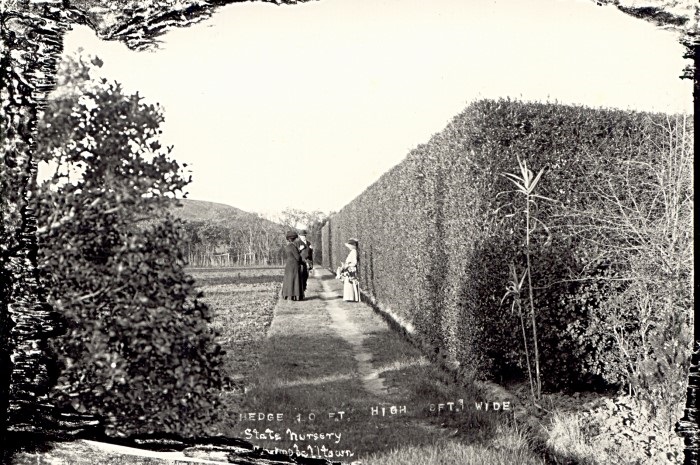
New public buildings
The 1880s saw a boom in public buildings with a Post Office in 1881. Artwork by Sandy Inglis

(Image sourced from Campbelltown Catholic Club)
Canals and tunnels that support the Upper Nepean Scheme
The Upper Nepean Scheme of the 1880s saw a series of canals and tunnels(PDF, 196KB) constructed alongside Campbelltown to transport water from the Nepean River and its tributaries to Prospect Reservoir, entirely by gravity - an engineering marvel. This section was photographed near Kenny Hill.
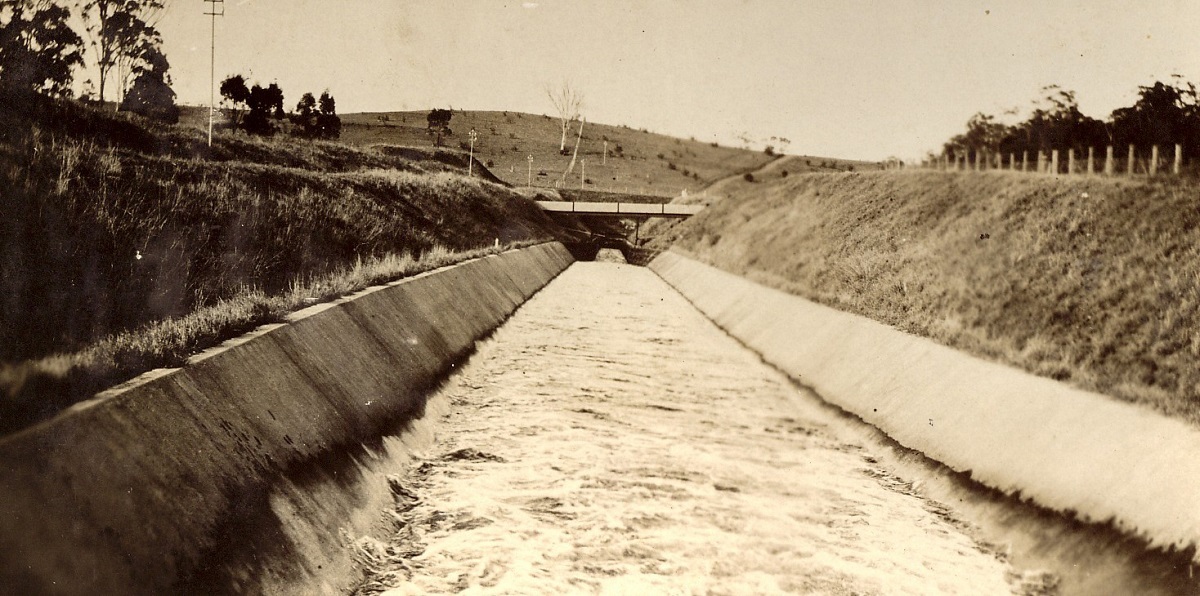
(Image sourced from Nash Family Collection)